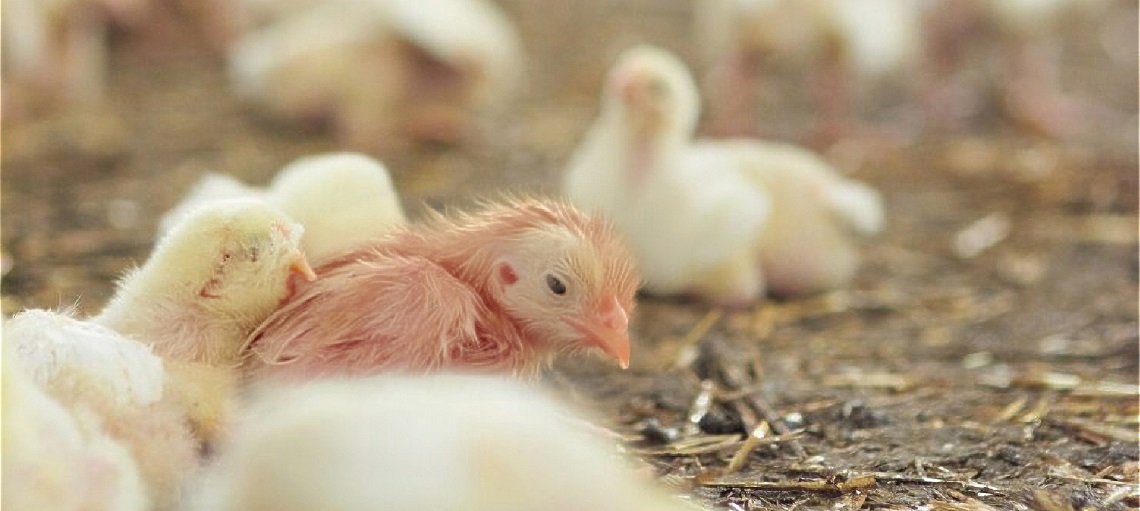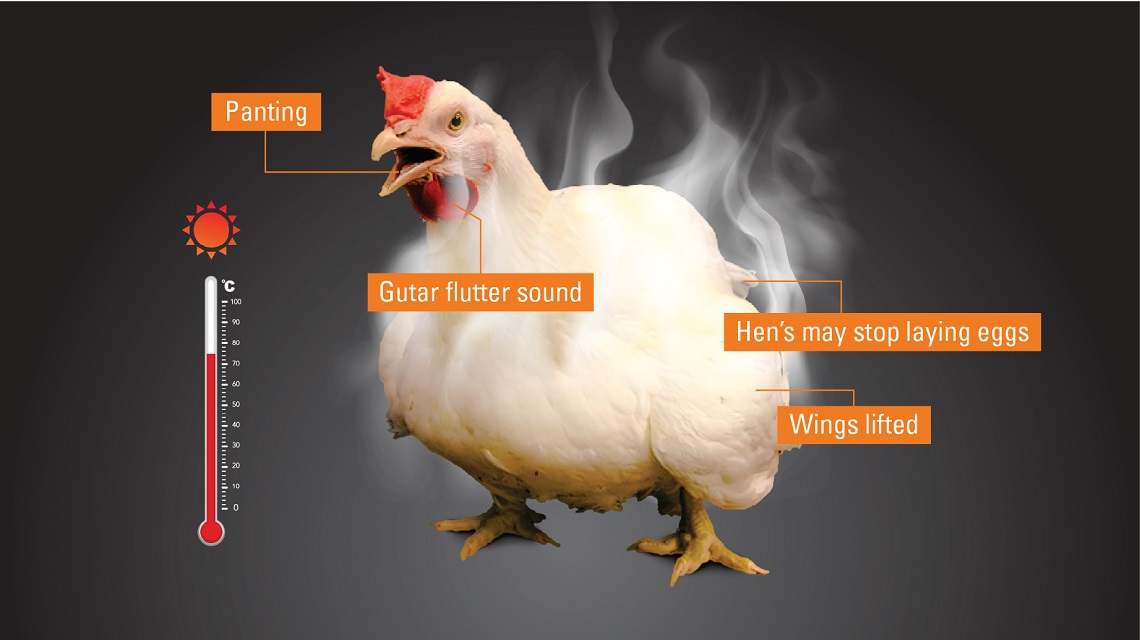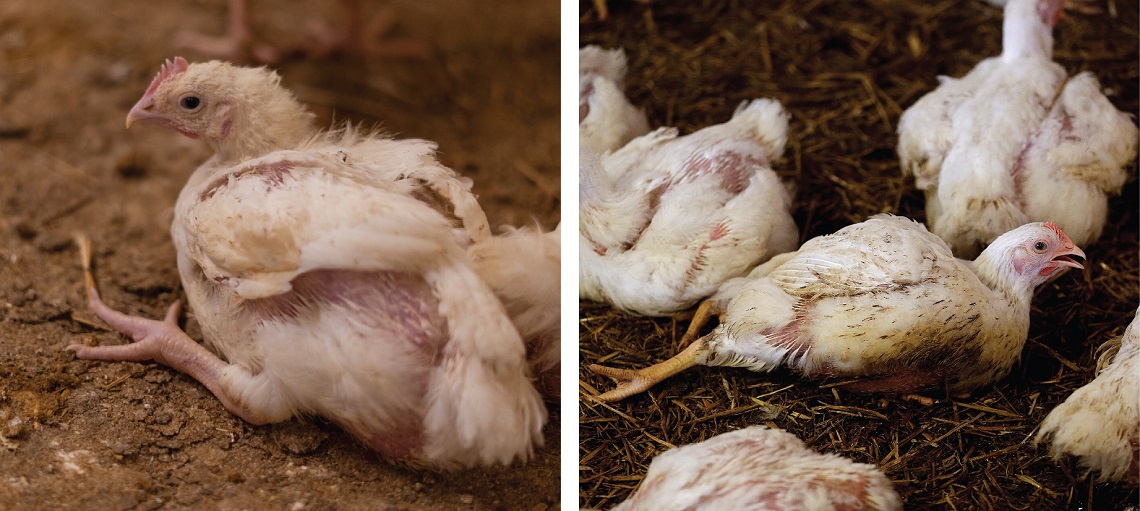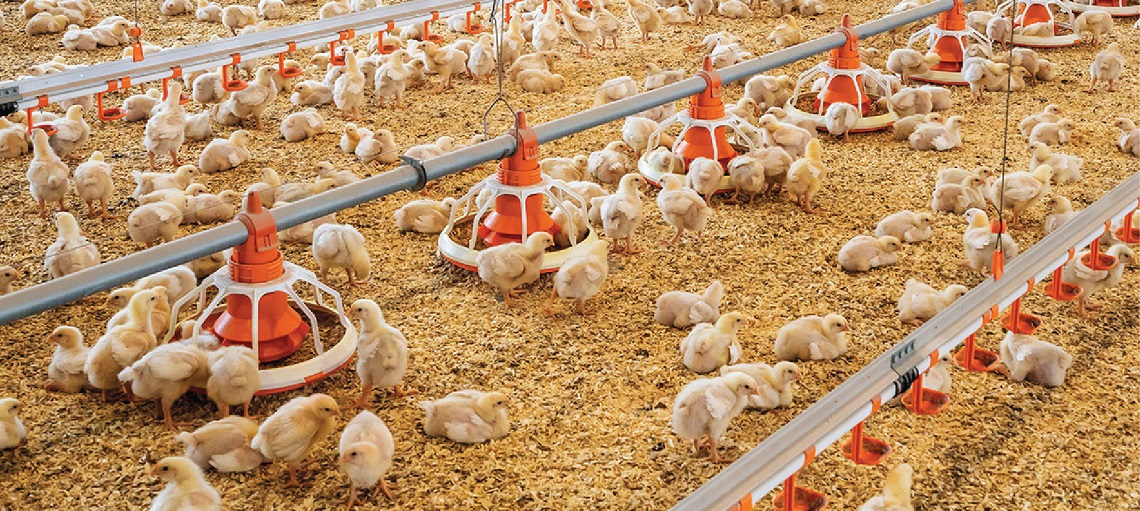Early Detection: 8 Key Behavioural Indicators of Heat Stress in Broiler
While management intervention is crucial when birds are experiencing heat stress, it is often only implemented when the birds are already experiencing the negative effects, which by then can be too late. It is important for farmers to be able to detect heat stress in their flock at the earliest stage to prevent the negative effects altogether. Broiler chickens exhibit several behavioural changes when they begin to experience heat stress. Recognising these early indicators can help farmers address temperature-related challenges promptly.
Understanding Heat Stress in Broilers

Heat stress occurs when broiler chickens are unable to regulate their body temperature effectively due to high environmental temperatures, usually combined with high humidity. Chickens naturally do not sweat like humans; instead, they rely on respiratory and behavioural adaptations to release excess heat. When these mechanisms are insufficient, heat stress develops, impacting everything from appetite to immune function, and in severe cases, it can lead to death. Contributing environmental factors include high temperatures, poor ventilation, overcrowded housing, and inadequate access to water.
Detecting heat stress early is vital for maintaining flock productivity and welfare. Early intervention allows farmers to implement cooling strategies before the birds reach severe stress levels. Heat stress affects feed conversion ratios, lowers growth rates, and increases susceptibility to disease, leading to economic losses. By catching these signs early, farmers can minimise the negative impact and provide a more comfortable environment for their birds.
The 8 Key Early Behavioural Indicators of Heat Stress in Broilers

Broiler chickens exhibit several behavioural changes when they begin to experience heat stress. Recognising these early indicators can help farmers address temperature-related challenges promptly. Daily observation of bird behaviour is crucial as it provides direct insight into the chickens' comfort levels, even before physiological symptoms become apparent.
1. Panting and Open-Beak Breathing

One of the first signs of heat stress in broilers is panting. Since chickens cannot sweat, they cool themselves by rapidly breathing with an open beak, a behaviour known as panting. Monitoring panting frequency and intensity is a reliable way to assess heat stress levels. If many birds are panting, it is a clear sign that the temperature may be too high and corrective measures are needed.
2. Lethargy and Reduced Activity
When temperatures rise, chickens become less active and appear more sluggish. They may spend more time standing still or sitting down, conserving energy due to the added stress on their bodies. Reduced movement is a coping mechanism, but it also signals discomfort.
3. Increased Water Intake
Heat-stressed chickens tend to drink more water and consume less feed as the increase in water intake is an attempt to regulate body temperature. Observing this shift in feeding and drinking behaviour is critical for early heat stress detection. Reduced feed consumption during high temperatures is a sign that the birds are experiencing thermal discomfort.
4. Crowding Near Cool Areas
Broiler chickens often seek out cooler areas in their environment when they are too hot. This behaviour is particularly noticeable if there are shaded spots, areas with fans, or other cooler zones within their housing. Birds may crowd together in these locations, which can lead to further stress due to reduced airflow and increased humidity.
5. Wing-Spreading and Body Position Adjustments
When chickens are trying to cool down, they may spread their wings away from their bodies to allow heat to dissipate. This behaviour is often paired with standing still in an open posture, which maximises airflow around their body.
6. Elevated Resting Periods
During heat stress, broilers may rest more frequently, spending extended periods sitting or lying down. This change in resting patterns indicates that the birds are trying to conserve energy and reduce metabolic heat production. Excessive resting, especially during times of day when the birds are usually more active, is a sign of discomfort.
7. Changed in Vocalisation
Some birds may vocalise less as their energy levels drop, while others may emit distress calls if they’re severely uncomfortable. These vocalisation patterns, whether an unusual quietness or agitated sounds, can help alert farmers to emerging issues.
8. Reduced Social Interaction
Heat-stressed chickens often withdraw from social behaviours, preferring to rest alone rather than engaging in group activities. Reduced interaction, such as fewer foraging or dust-bathing behaviours are typical. Observing this lack of social behaviour is an additional behavioural marker that suggests the flock is under environmental stress.

By understanding and recognising these signs, farmers can take timely action to improve the environment, protect the health of their flock, and maintain productivity. Of course, ensuring that the ventilation system is working optimally and frequently checking the drinking lines are prerequisites for maintaining a comfortable environment for broilers. Regular monitoring of both behaviour and environmental conditions is essential for proactive and effective heat stress management.
Discover effective strategies to prevent heat stress in broilers. Click the ‘Send a Message’ Button below to talk to us.

